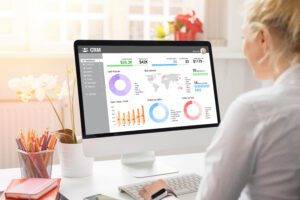Your Data Visualized: The 10 Best Charts and Graphs That Will Enhance and Optimize Your Business

<?xml encoding=”utf-8″ ?????????>
Fortunately, charts and graphs are powerful tools that can help you achieve just that. They provide a visual representation of data, making it easier to understand complex information, identify trends, and make informed decisions.
In this article, we’ll explore the ten best charts and graphs that will enhance and optimize your business by turning data into valuable knowledge.
Bar Charts
Bar charts are simple yet effective tools for comparing data across categories or showing changes over time. They use rectangular bars of varying lengths to represent data values. Bar charts are perfect for visualizing sales figures, market share, or employee performance.
Enhancement: Bar charts make it easy to spot trends and anomalies, helping you make data-driven decisions and optimize your business strategies.
Flowcharts
Flowcharts are invaluable tools for visualizing processes and workflows. They use various shapes and symbols to represent steps, decisions, and flow direction within a sequence. Make a flowchart online to provide a structured way to outline processes and identify bottlenecks or inefficiencies.
Enhancement: Flowcharts optimize business processes by revealing areas for improvement, standardizing procedures, and facilitating effective communication within your organization.
Line Graphs
Line graphs are ideal for showing trends and variations in data over time. They connect data points with lines, allowing you to track changes and patterns. Line graphs are commonly used to visualize revenue growth, website traffic, and stock prices.
Enhancement: By analyzing line graphs, you can identify growth opportunities, adjust marketing campaigns, and optimize resource allocation.
Pie Charts
Pie charts provide a clear way to represent the composition of a whole. They divide a circle into slices, with each slice representing a proportion of the total. Pie charts are great for displaying market share, budget allocation, or customer demographics.
Enhancement: Pie charts simplify complex data structures, making it easier to understand and optimize resource distribution.
Histograms
Histograms are essential for understanding the distribution of a single variable. They group data into intervals or bins, showing the frequency of data points in each bin. Histograms are valuable for analyzing employee ages, customer purchase amounts, or product defect rates.
Enhancement: Histograms reveal data patterns, helping you optimize processes and identify areas for improvement.
Scatter Plots
Scatter plots illustrate the relationship between two variables by plotting data points on a graph. Each point represents a data pair, with one variable on the x-axis and the other on the y-axis. Scatter plots are useful for identifying correlations and outliers in data.
Enhancement: Analyzing scatter plots can lead to optimized marketing strategies, better inventory management, and improved quality control.
Gantt Charts
Gantt charts are indispensable for project management. They display tasks or activities on a timeline, showing their duration and dependencies. Gantt charts help allocate resources, track progress, and ensure project timelines are met.
Enhancement: Gantt charts optimize project planning and resource allocation, leading to efficient project execution.
Heatmaps
Heatmaps use color-coding to represent data values in a matrix or grid format. They excel at visualizing patterns, trends, and variations in large datasets. Heatmaps are valuable for analyzing website user behavior, geographic data, and risk assessment.
Enhancement: Heatmaps reveal insights that can drive optimization efforts, such as website redesigns or targeted marketing campaigns.
Stacked Bar Charts
Stacked bar charts extend the capabilities of bar charts by displaying multiple datasets as stacked bars. Each segment of the bar represents a subcategory. Stacked bar charts are perfect for illustrating the composition of a total value, such as sales by region and product category.
Enhancement: Stacked bar charts help optimize resource allocation, product development, and marketing strategies.
Radar Charts
Radar charts, also known as spider charts or web charts, compare multiple variables across different categories. They use a circular graph with spokes radiating from the center, with each spoke representing a variable. Radar charts are valuable for performance assessments, product comparisons, and SWOT analyses.
Enhancement: Radar charts offer a unique perspective on data, aiding in the optimization of products and services.
Visualizing your data using these ten charts and graphs will enhance your ability to optimize your business processes, make informed decisions, and achieve your business objectives. Whether you’re tracking sales, managing projects, or analyzing customer behavior, these visualization tools will empower you to turn data into actionable insights for continuous improvement and growth.




